The first thing upon arriving in Cali, Colombia, is getting used to the noise. So much traffic, so many motorcycles and buses, so devilish, make up a landscape sonorous that will leave you a bit stunned. The Great Serengeti Wildebeest Migration it's a well-organized preschool line compared to a random Cali-dungeon crossing, as he liked to call it Andrés Caicedo, one of our protagonists.
On some taxi or bus journeys you will have to pay attention to potholes, larger and more mysterious than the Amazon. And if you walk through certain areas at night –“ giving papaya”, they say here, or given the opportunity, we would say– you will get rid of the burden of answering wasaps until you get a new phone.
once taken the proper precautions to move around this city, Cali is a movie location: let us begin a journey that no longer exists.
Caliwood or the Cali Group was, as one might imagine, a name given to a group of youths Caleños who made movies –among other things– and who turned the city upside down in the 70s. “The country is collapsing and we are partying” is one of his phrases from those years, and one of the ones that best represents this group that was created between sex, drugs and Rock And Roll. and sauce, of course.
Andres Caicedo was the maximum exponent of the generation, he committed suicide at the age of 25 (in 1977): “from the age of 25, life begins to repeat itself”, he said, warned, the writer of "Long live music!", novel that turned Cali into a literary character and himself into a myth from Cali.
Luis Ospina, of whom Caicedo said: “He is the only person I know who has seen more movies than me”, was the longest-lived (2019) and was in charge of leaving us an audiovisual self-portrait of the Cali Group, a documentary film of three beautiful hours and a half: "Everything began at the end" (2015).
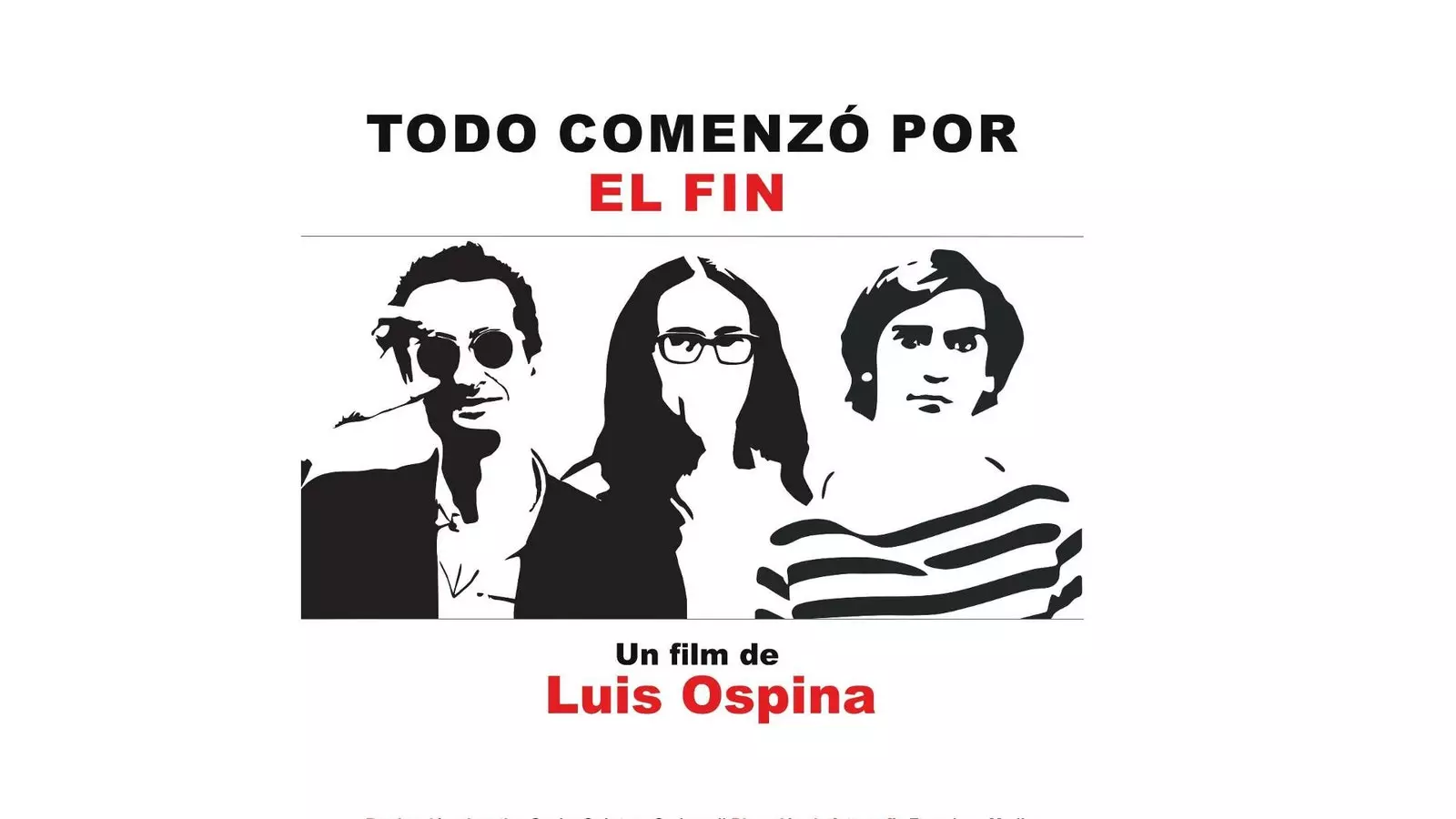
It all started at the end, by Luis Ospina (2015).
Carlos Mayolo, they say, the most dedicated to tropical hedonism until the last of his days (2007), was also an actor –and star– in many of the films and short films of the Grupo de Cali. Ospina said: "Caicedo is a genius, Mayolo is great." Caicedo, Ospina and Mayolo are the holy trinity of this generation.
CALIWOOD: ARCHAEOLOGICAL CALI
Before touring the streets of Cali, like a archaeologist innocent, looking for the remains of the Caliwood Generation, I visit one of the survivors in his house on the outskirts of the city. Eduardo “the rat” Carvajal was the Caliwood photographer. He was the one who took the famous photos of Andrés Caicedo – which are now his most iconic image – one sunny Saturday morning in front of the doors of the film club. The one who recorded dozens of hours of material behind the scenes. the one that was audiovisual memory of the Cali Group.
He shows me photos of filming: “this one, he traveled”, “this one, he also traveled”, “that one, he also traveled”, he says between laughs and solemnity while he points on the screen to all those who have already died. "The rat" is one of the few that are still alive, of the few who, as he says, have not traveled yet. As he recounts stories of those wild years, we drink coffee and listen to boogaloo. “We would spend several days partying, and at any moment Andrés would start writing. He sat at the table, in the living room or the kitchen, and he would start typing, very fast: clack-clack-clack-clack. That's why we started calling him Pepe shrapnel”.
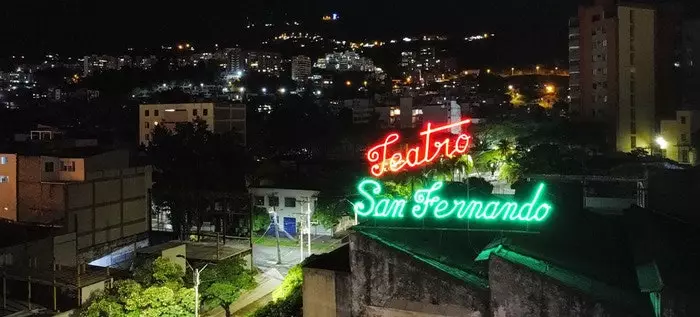
Neon of the San Fernando Theater, Cali, Colombia.
With the clues that "the rat" has given me, I begin to search the places where the Cali Group it became a myth. I approach the building that, in its day, housed the famous film club. The san fernando theater near the América de Cali stadium, on Calle Quinta with Carrera 34, it no longer brings together hippies and intellectuals in front of the screen. hitchcock, Bergman and Bunuel They have lost their pantheon.
The place where Andrés Caicedo, together with Luis Ospina and other colleagues, projected films every Saturday, and distributed brochures with his film reviews and critics, Now it's a church an evangelical church. Father, Son and Holy Spirit have replaced Caicedo, Ospina and Mayolo. To the sauce, the perico and the Olivetti. Of those years only remains the poster, at the top of the building.
HEADING TO SOLAR CITY
I follow the route that does not exist up fifth street, heading north, towards Sun City: the hippie commune in which some of them lived. Cali is tropical and 32 degrees perspire my guayabera. Cali-heat burns. Large, tropical cities far from the sea are not well explained. This heat is not understood between avenues and traffic.
With a three fruit juice I arrive at the door of what was Ciudad Solar, in the historic center of Cali: the place where almost everything began. In Solar City They had parties, movies, gatherings, photography. Caicedo lived in Solar City. In Ciudad Solar, in the early 1970s –everything comes a little later here–, May 1968 was experienced and all that it entailed. In Solar City they gathered travelers, painters, filmmakers, writers, photographers.
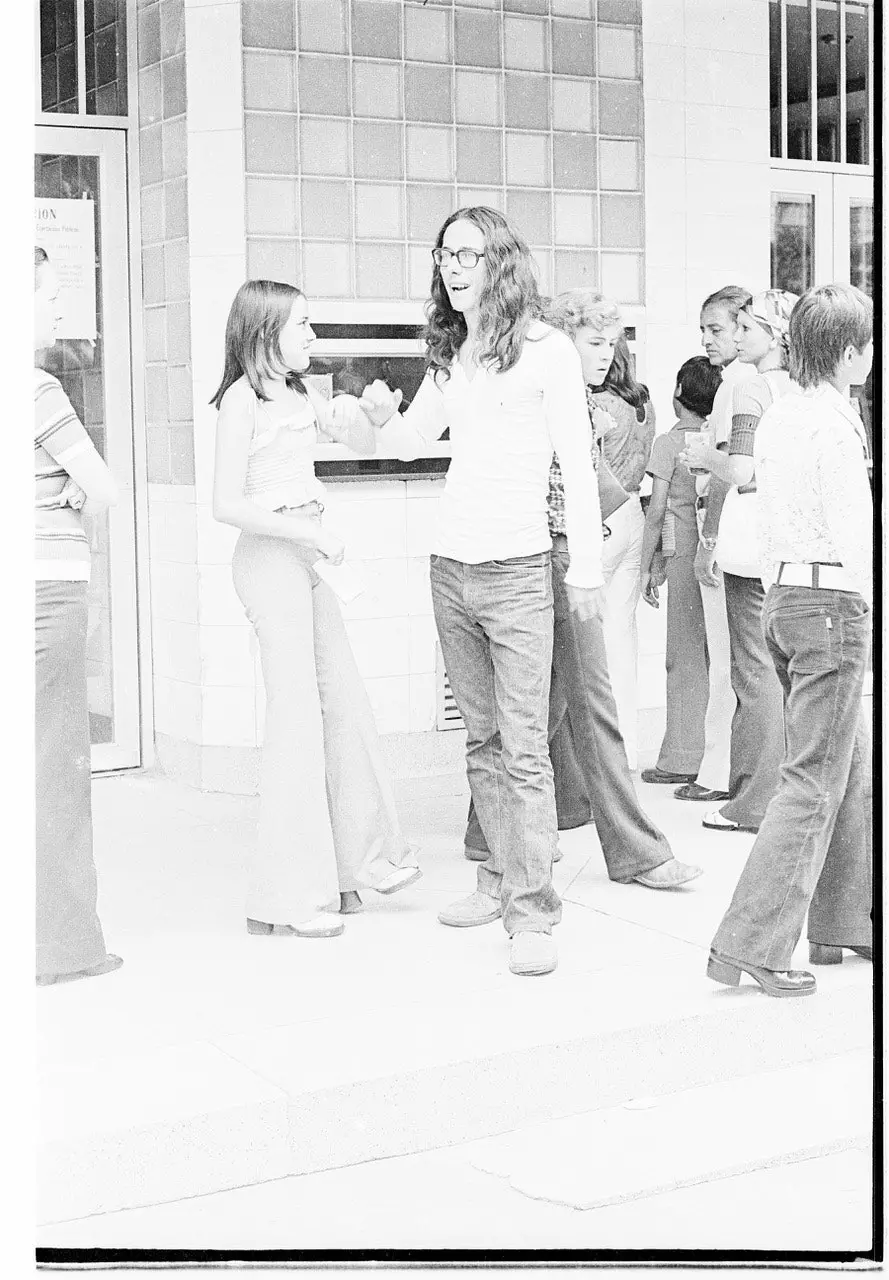
Andrés Caicedo at the film club, Cali, Colombia.
Ciudad Solar is a two-story building with white walls and windows large wooden The facade is not very well cared for, It looks like a half abandoned building. The street is deserted and the door of the house is open. I enter Solar City asking for permission to air: "Hello, is there anyone?" I enter Solar City excited, like a madridista at the Bernabéu.
The interior is under construction and silent. In the middle of the house there is a opening where the sun passes –perhaps that's where the name comes from– that reveals the second floor. Now the owners come out: “You have done well entering,” Alicia and Lisímaco tell me, "An open door is an invitation to enter."
The doors, beams, pillars are made of wood; the floor, tiled with mosaics. The second floor is about to fall down, you can't go up. From below you see the room where Caicedo lived and the room where "the rat" set up the dark room to develop photographs. Of what was Solar City, only the name remains, in addition to many memories. Alice and Lysimachus want set up a cultural house, there is no money at the moment. I leave. I go out looking The next stop of a journey that no longer exists.
THE TURKS, TO BE AND NOT TO BE
The Turks restaurant of Lebanese food, is one of the oldest in Cali, open since 1960. politicians, writers, intellectuals, students from Univalle (the largest public university in Cali) and also, of course, the Caliwood generation. Ospina, Mayolo, Caicedo and company spent many hours chatting in this restaurant (it is even said that Caicedo was in Los Turcos the morning before committing suicide).
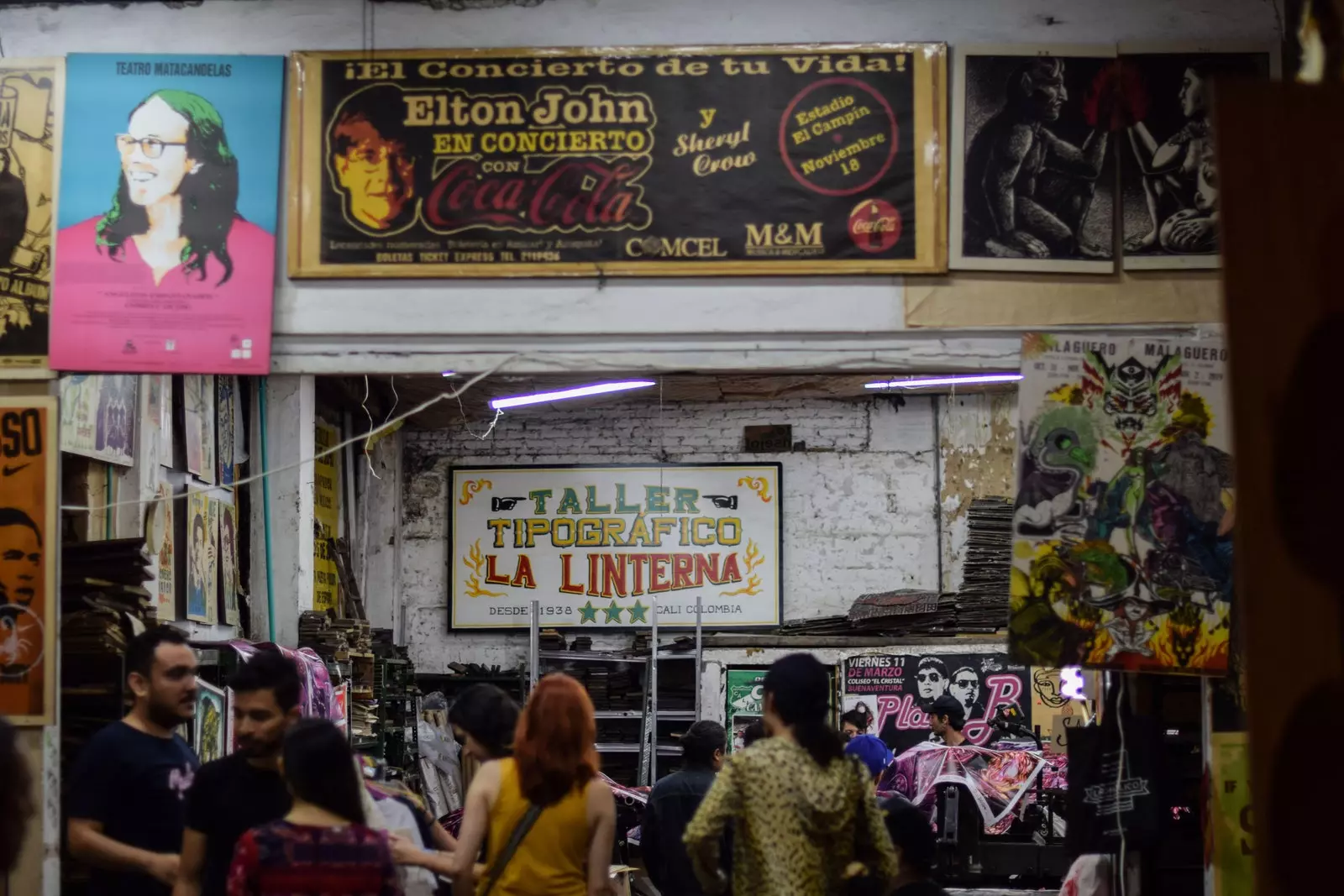
"La Lantern" posters in the San Antonio neighborhood, Cali, Colombia.
The specialty of the house, that they surely enjoyed during their long conversations, is the tangerine juice (pure juice: no water, no milk, no sugar) that now rests on my table. Victor Hugo, The waiter, who has been working here for forty years, recommends the Arabian tray: Fried quibde, rice with chicken and almonds, cafta with onions, tabbule, mixed Indians and Arabic bread.
With the full stomach and happy –it was really delicious– I wait for the coffee, to go (“Indian eaten, Indian gone”, a colleague told me the other day as soon as I finished eating). the place is spacious, comfortable, bright. I imagine the Cali Group around one of these tables smoking, drinking, arguing about films, books and revolutions I can almost see them, hear them.
But no, this is not the place. Victor Hugo wakes me from reverie: “nine years ago the restaurant moved”, the original was a few blocks away. Same food, same drink, same atmosphere, same –and great– waiter, but no, this place, exactly, doesn't exist either. The memory of Caliwood is blurred.
CORDIKI AND LONG LIVE THE MUSIC
I walk up to the Cordiki building, at the beginning of sixth avenue, where Andrés Caicedo killed himself taking sixty pills of seconal the day he received the first edition of his novel Long live music!. Cordiki is a tall, blue, apparently abandoned building; can not enter.
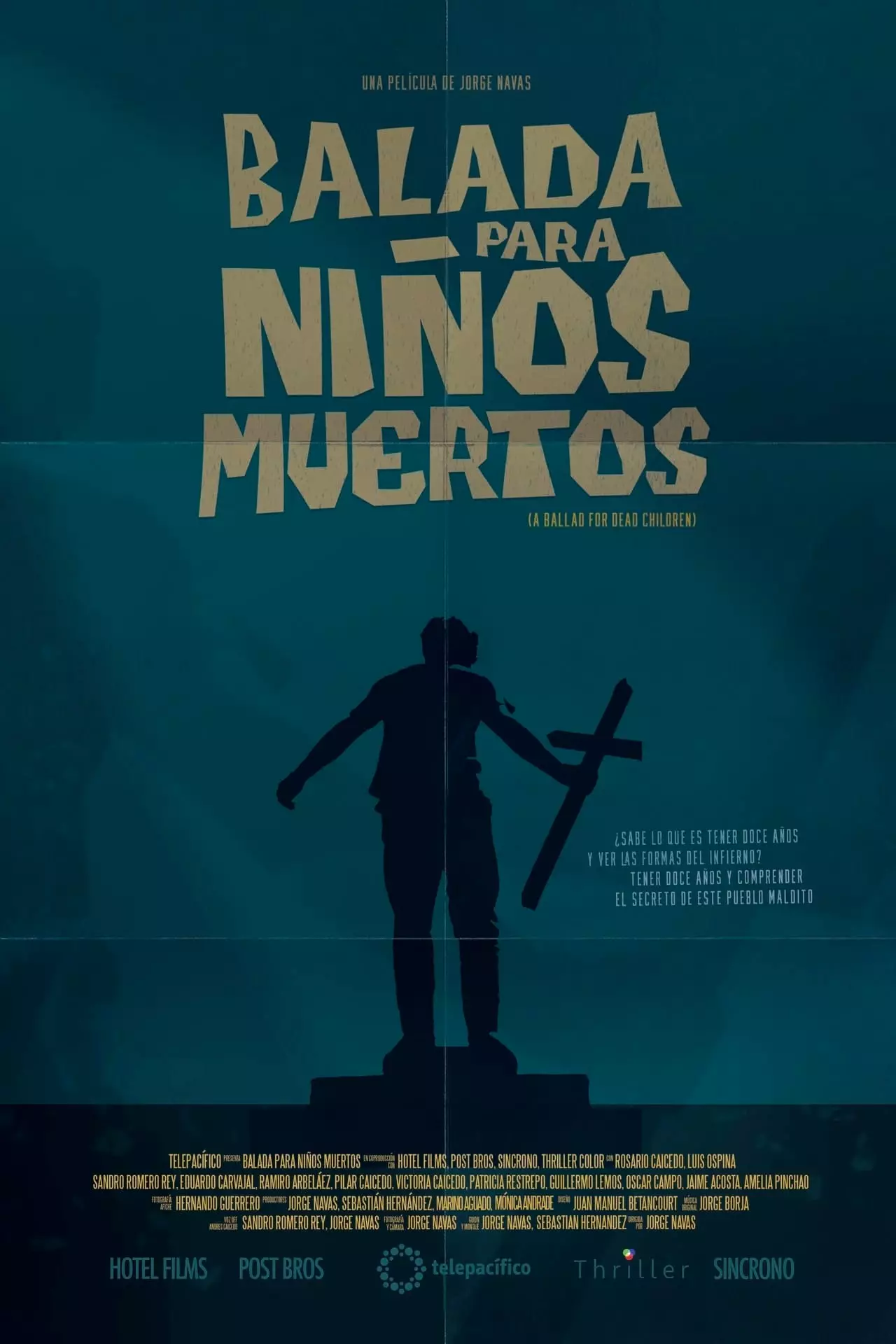
Ballad for dead children, Jorge Navas (2020).
Caicedo never knew how to deal to the daily ups and downs, and this was reflected in numerous correspondence that has been published recently, also in fragments of his scripts, in "Cali-dungeon" he writes: “Yeah, I hate all of this, all of that, all of it. And I hate it because I fight to get it, sometimes I can win, sometimes I can't. That's why I hate him, because I fight for his company. I hate it because to hate is to love and learn to love. They understand me? I hate it, because I haven't learned to love, and I need that. That's why I hate everyone I can't stop hating anyone to nothing… to nothing, to no one, without exception!”
in the documentary ballad for dead children, about the work of Caicedo, of Jorge Navas, another excellent director from Cali, Luis Ospina says that "Caicedo is the Kurt Cobain of Colombian literature. I think of Caicedo and Cobain as I look out the first floor windows, search for the apartment 101, where Caicedo is supposed to have lived. They say that his mother was the first to arrive, that she moved him from the desk to the bed, He closed her eyes, stroked her hair, and talked to her until the ambulance arrived.
"Mamacita", begins the letter that Caicedo sent to his mother in 1975 in a first suicide attempt (two years before killing himself), “one day you promised me that whatever I did you would understand and agree with me. Please, she tries to understand my death.” There is nothing around the building that reminds of Caicedo; not a mural, not a signature, not a badge.
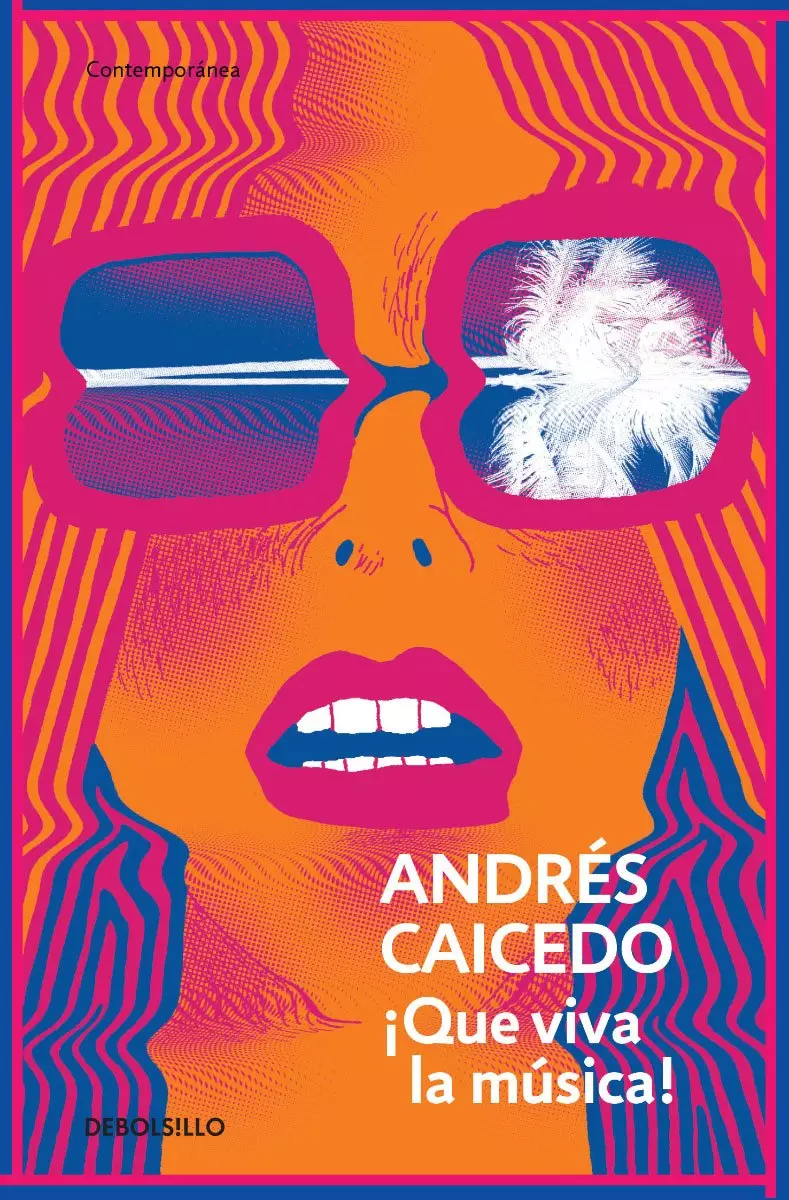
Long live the music!, by Andrés Caicedo.
VERSAILLES PARK: RUMBA AND LIQUOR
I continue the route along Sixth Avenue, a very Caicedian avenue, in the direction of Versailles Park. In many of his texts this avenue appeared, very frequented in the 70s, now it is still a place of rumba, dance and liquor. Every few meters there is a bar, a restaurant, a disco. sixth avenue stand the test of time.
from the building Cordiki to Versailles Park, where María, the protagonist of Long live music, goes out partying in the first pages, there are barely ten minutes on foot. Through the perpendicular streets that feed the sixth avenue it is possible to see the hill of the Three Crosses, a mountain that presides over Cali with three huge crosses on top.
“In Cali three crosses were placed on top of the hill so that the devil did not enter, the problem is that the devil was already inside and he couldn't get out”, this excerpt from the documentary Cali: from a movie (1973), of Ospina and Mayolo could explain the sensation that Caicedo felt in this city, in his Cali-dungeon.
Salsa, rock, Hector Lavoe, Rolling Stones, cinema, parakeet, loneliness, fiction, marginality, violence; the portrait of a city that devoured Caicedo. How fine is the line between shelter and jail, he must have thought many nights.
Although most of the places where Caicedo and the Cali Group became a myth no longer exist, you can still tour the city through what they were, what they left written and recorded. At the end of the day, Cali is Caicedo, Caicedo is Cali. Cali-yield, I propose, from now on.
